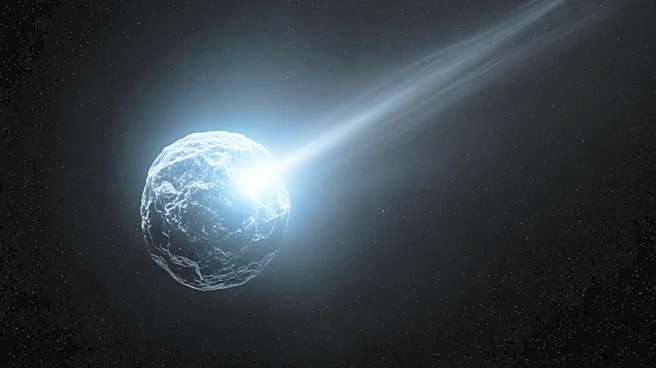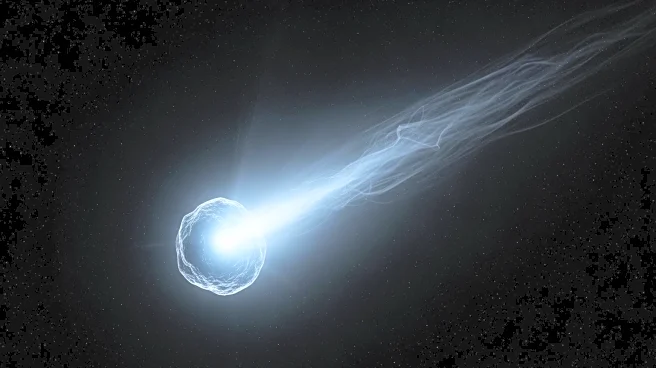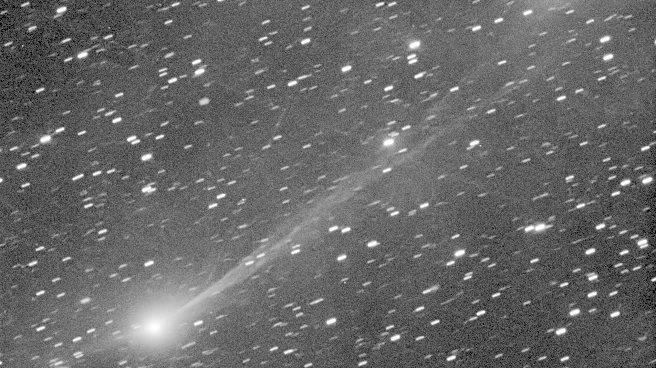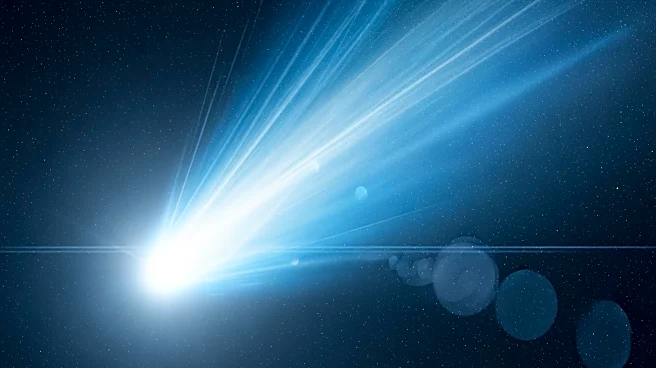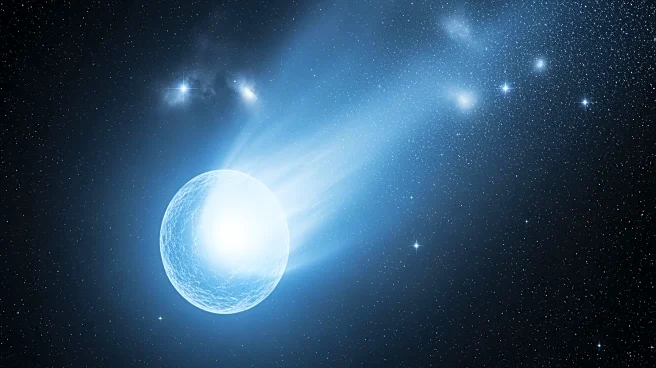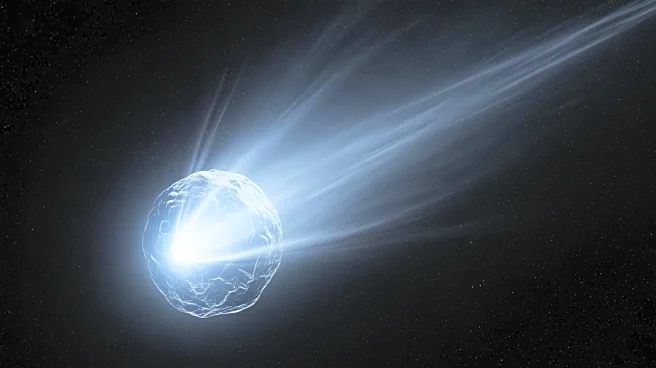What's Happening?
NASA has released a series of images capturing the journey of the interstellar comet 3I/ATLAS as it travels through the solar system. Discovered on July 1 by a telescope in Chile, the comet is the third
known interstellar object to visit our solar system. It reached speeds of 153,000 miles per hour as it passed Mars and the sun, heading back into deep space. The comet poses no threat to Earth, with its closest approach being 168 million miles away on December 19. The comet's size ranges from 1,400 feet to 3.5 miles across, significantly larger than Manhattan. NASA and the European Space Agency utilized various spacecraft and ground telescopes to document the comet's passage, including the James Webb Space Telescope and the Hubble Space Telescope.
Why It's Important?
The observation of 3I/ATLAS highlights the capabilities of current space technology and the importance of monitoring interstellar objects. The comet's journey provides valuable data for scientists studying the dynamics of such objects and their potential impact on Earth. The event underscores the need for continued investment in space exploration and monitoring systems to detect and analyze celestial bodies that could pose a threat. The comet's passage also fuels scientific curiosity and public interest in space phenomena, contributing to broader discussions about the universe and our place within it.
What's Next?
As 3I/ATLAS continues its journey, it will be observed by spacecraft such as NASA's Europa Clipper and the European Space Agency's Jupiter Icy Moons Explorer. These observations will provide further insights into the comet's characteristics and trajectory. The scientific community will continue to analyze the data collected to enhance understanding of interstellar objects. Public interest may lead to increased support for space exploration initiatives, potentially influencing future funding and research priorities.
Beyond the Headlines
The comet's passage has sparked discussions about the possibility of extraterrestrial life, with some scientists speculating about its origins. Harvard astrophysicist Avi Loeb has suggested that 3I/ATLAS could be a technological object, though this theory is widely dismissed by other experts. The debate highlights the intersection of science and speculation, encouraging public engagement with scientific inquiry and the mysteries of the universe.


